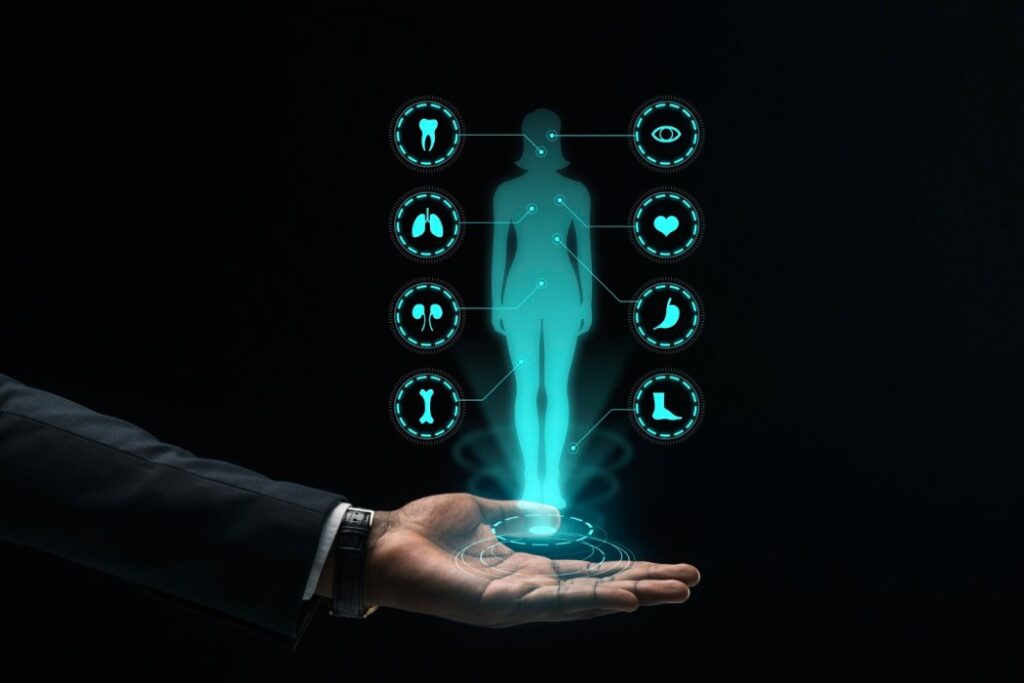Conversational AI in Healthcare: A New Era of Smart, Scalable, and Human-Centered Care
Picture this: It’s 3 a.m., and your toddler has a fever. You need advice but don’t want to rush to the emergency room unnecessarily. Instead of scouring Google or waiting till morning, you open a health app, ask a question, and receive tailored guidance—within seconds. This is not futuristic fantasy. It’s conversational AI in healthcare at work.
Healthcare is under immense pressure. With an aging population, increasing demand for personalized care, and critical shortages of medical staff, traditional systems are stretched thin. But thanks to conversational AI, we’re entering a new era where virtual agents, chatbots, and voice based assistants help deliver care more efficiently and more humanely.
In this blog, we’ll explore the evolving landscape of conversational AI in healthcare—what it is, where it’s used, the benefits it offers, and the challenges we must overcome.
What is Conversational AI in Healthcare?
Conversational AI in healthcare refers to the use of artificial intelligence technologies—like Natural Language Processing (NLP), machine learning, and speech recognition—to enable machines to simulate human conversation in clinical, administrative, or patient facing healthcare settings.
These AI-powered systems can:
- Understand human language (text or voice)
- Interpret intent and context
- Provide meaningful responses
- Learn from interactions to improve over time
They differ from traditional chatbots, which follow scripted flows, by offering dynamic, human like conversations that adapt to user input.
📌 Example: Nuance DAX by Microsoft records patient provider conversations and automatically generates clinical documentation—saving doctors hours of paperwork each week.

Applications of Conversational AI in Healthcare
Conversational AI isn’t confined to one department—it’s being woven into every aspect of care. Below are key areas where it’s driving transformation:
1. Virtual Health Assistants & Chatbots
Virtual assistants like Florence and Sensely provide round the clock support, helping users with:
- Medication reminders
- Symptom checking
- Post surgery care
- Health education
Patients benefit from instant guidance, reducing the need for unnecessary clinic visits.
2. Automated Appointment Scheduling
AI assistants can handle:
- Booking and rescheduling appointments
- Insurance pre authorization
- Sending reminders
This automation reduces administrative workload, improves patient attendance, and streamlines front desk operations.
💡 According to a Salesforce survey, 76% of patients expect digital tools to help with appointment management.
3. Mental Health Support
Platforms like Woebot use conversational AI to deliver cognitive behavioral therapy (CBT) techniques through empathetic interactions.
- Offers anonymity and privacy
- Reduces wait time for therapy
- Acts as a first line of support
Especially in underserved regions, conversational AI is filling mental health gaps where professionals are scarce.
4. Remote Patient Monitoring & Chronic Disease Management
By integrating with wearables and health apps, AI agents can:
- Monitor vitals (like heart rate, glucose levels)
- Prompt lifestyle recommendations
- Alert healthcare providers in real time
Patients with chronic conditions like diabetes or hypertension benefit from continuous care, without frequent hospital visits.
5. Clinical Decision Support
For clinicians, conversational AI tools can:
- Provide evidence based recommendations during consultations
- Flag critical symptoms or medication conflicts
- Streamline triage and patient intake
This enables faster, safer, and more accurate diagnoses, especially in high volume settings like ERs.

3 Benefits of Conversational AI in Healthcare
The adoption of conversational AI in healthcare is more than a tech trend—it’s delivering measurable outcomes.
1. 24/7 Accessibility and Scalability
Unlike human teams, AI assistants don’t need sleep. They’re always on, always available—offering consistent support at scale.
🚑 In rural areas where medical professionals are scarce, AI tools act as the first point of contact—delivering health advice, triaging symptoms, and guiding next steps.
2. Reduced Administrative Burden
Healthcare professionals spend up to 40% of their time on paperwork and admin tasks. Conversational AI can:
- Automate data entry
- Generate clinical notes
- Handle billing queries
This frees up time for human connection and complex care—where empathy and expertise matter most.
3. Improved Patient Engagement and Adherence
Consistent follow ups and personalized nudges improve treatment adherence. For example:
- “Don’t forget to take your blood pressure medication at 8 PM.”
- “Your next diabetes check in is due. Schedule now?”
📊 A Harvard Business Review article reports that patient engagement improves by 35% when AI assistants are part of care pathways.
Comparison: Conversational AI vs. Traditional Healthcare Models
| Aspect | Traditional Model | Conversational AI in Healthcare |
|---|---|---|
| Availability | Limited (office hours) | 24/7 real-time access |
| Human Interaction Required | Always | Only when needed |
| Cost to Scale | High | Cost-efficient |
| Personalization | Varies by provider | Dynamic and data-driven |
| Data Documentation | Manual | Automated, real-time |
| Response Time | Delayed | Instantaneous |
Unique Insights from the Frontlines
When I volunteered at a rural clinic in India, the biggest challenge wasn’t lack of medicine—it was lack of information. Patients didn’t know when to take medication, what symptoms to monitor, or when to return.
We piloted a WhatsApp based AI chatbot that could answer FAQs in Hindi and Gujarati. The change was stunning. Within two months:
- Appointment no shows dropped by 50%
- Medication adherence improved dramatically
- Patients asked more questions and felt empowered
This hands on experience convinced me: Conversational AI is a game changer—not just for cities, but for the last mile of care delivery.
Challenges and Ethical Considerations
Of course, with great potential comes real responsibility.
1. Data Privacy & Security
Handling health data means adhering to HIPAA, GDPR, and local regulations. Breaches can be devastating.
✅ Choose solutions with end-to-end encryption, secure cloud storage, and regular compliance audits.
2. Bias and Fairness
If AI models are trained on biased data, outcomes may favor certain groups over others. Continuous monitoring, diverse datasets, and AI explainability tools are essential to ensure fairness.
3. Lack of Emotional Intelligence
AI can simulate empathy, but it doesn’t feel. For cases like terminal diagnoses or trauma, human connection remains irreplaceable.
The Road Ahead: Future of Conversational AI in Healthcare
So, where are we headed?
- Multilingual AI breaking down language barriers
- Voice based diagnostics detecting illness from tone and speech
- Integration with IoT and wearables for real-time health conversations
- Predictive AI prompting preventive care based on lifestyle and genetic data
🌍 According to MarketsandMarkets, the global conversational AI healthcare market is expected to reach $1.3 billion by 2026.
Final Thoughts
Conversational AI in healthcare isn’t just about cutting costs or saving time it’s about reimagining care delivery. It ensures patients feel heard, supported, and engaged, even when doctors aren’t physically present. It complements not replaces human caregivers, freeing them to do what they do best: heal with heart. As this technology matures, the goal should always remain clear: make healthcare more accessible, more equitable, and more human with the help of intelligent machines.





I have been browsing online more than three hours today yet I never found any interesting article like yours It is pretty worth enough for me In my view if all website owners and bloggers made good content as you did the internet will be a lot more useful than ever before
Pingback: Use of AI in Automobile Industry